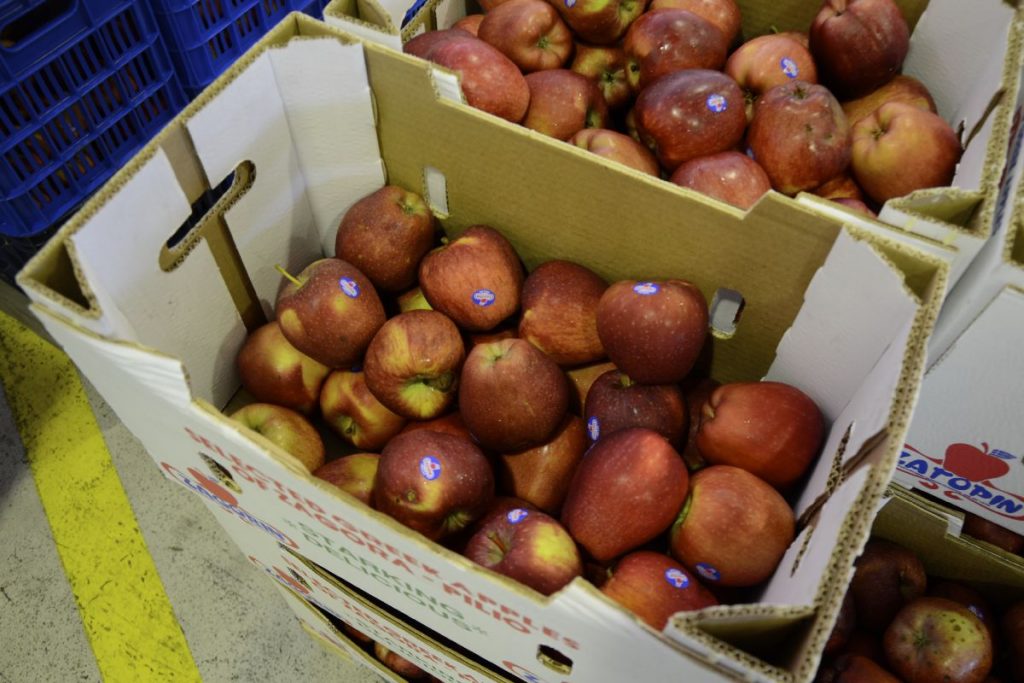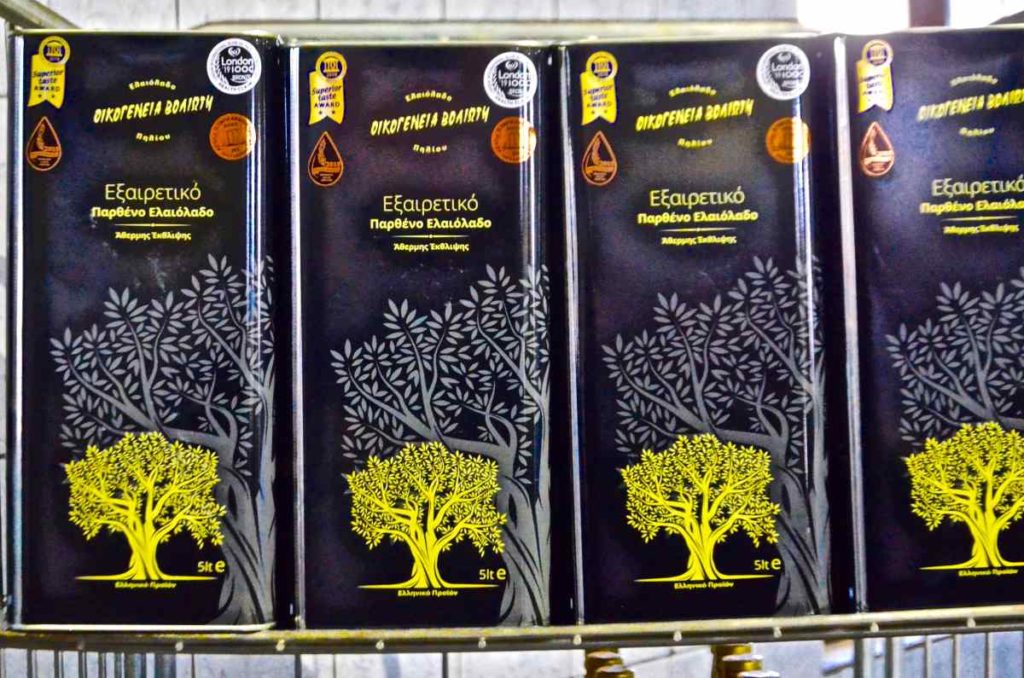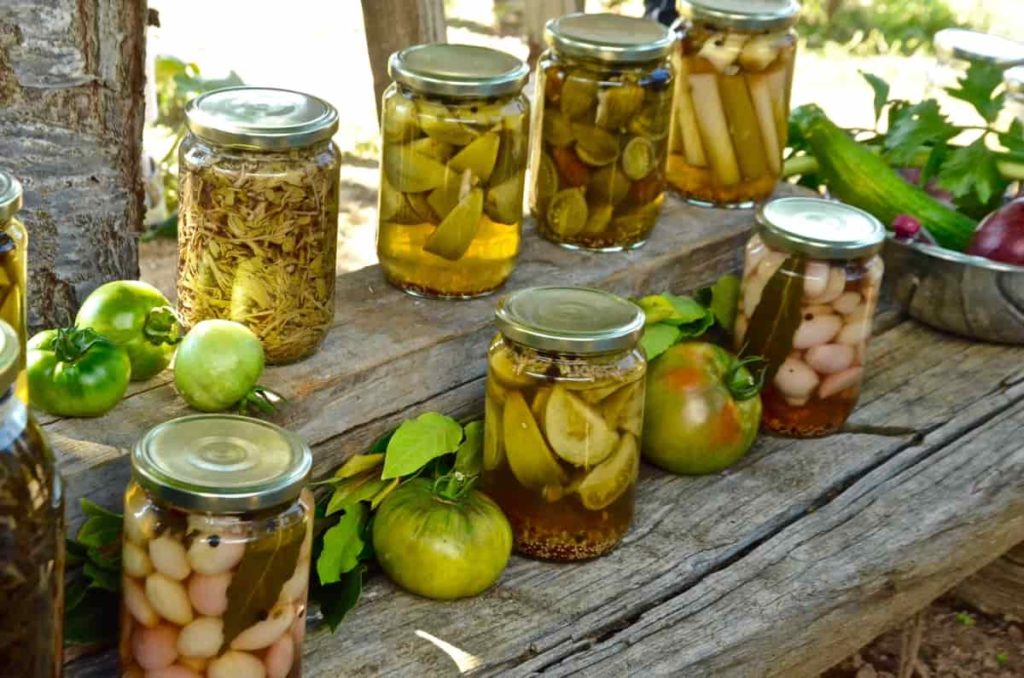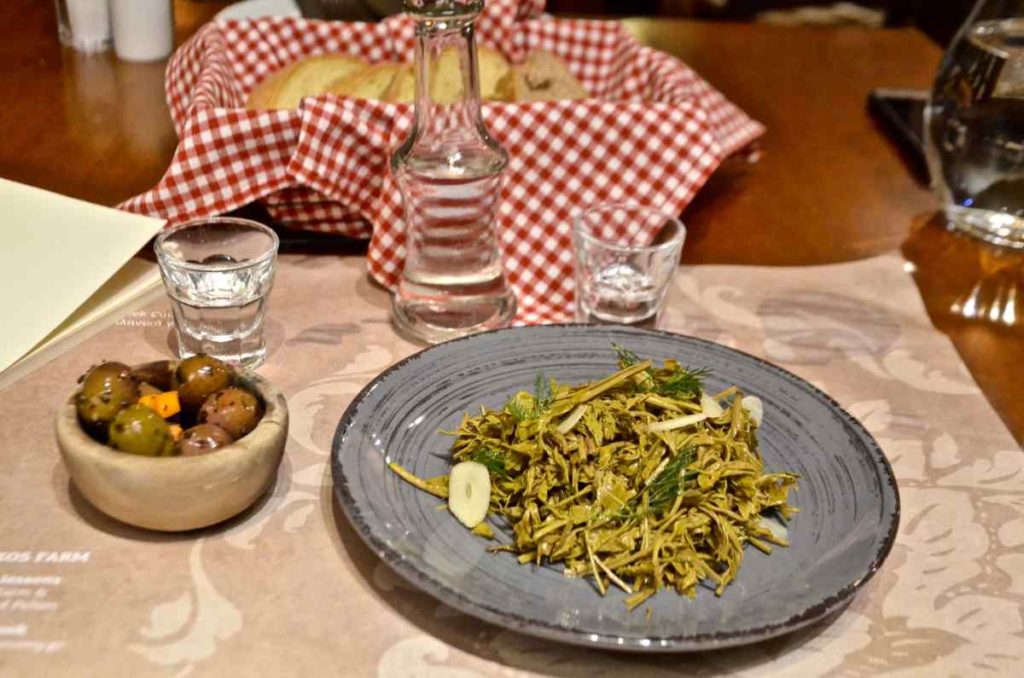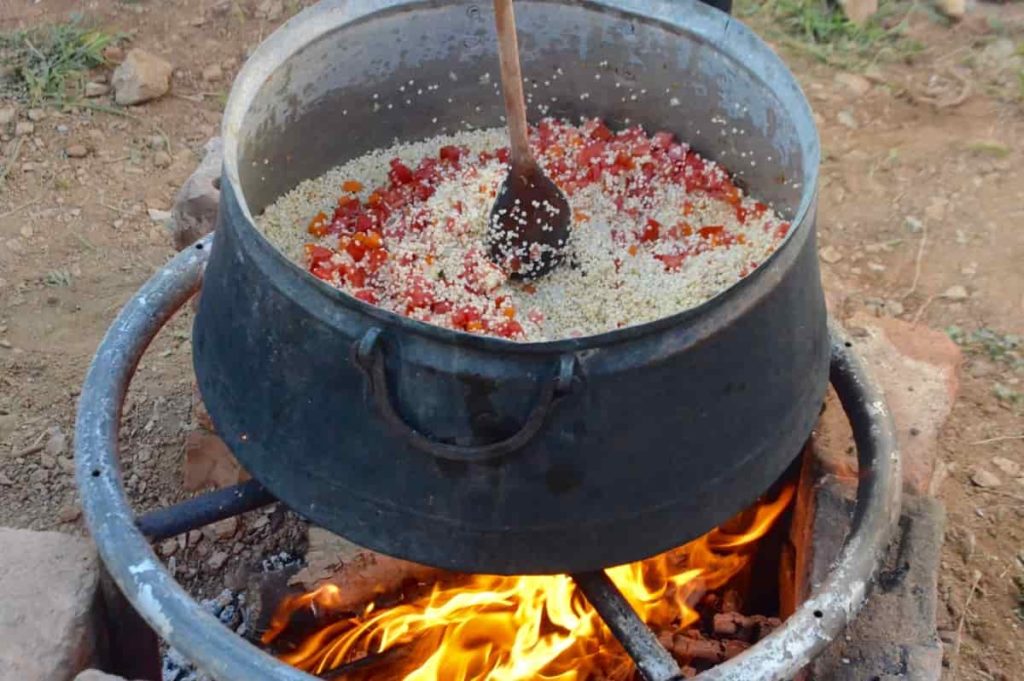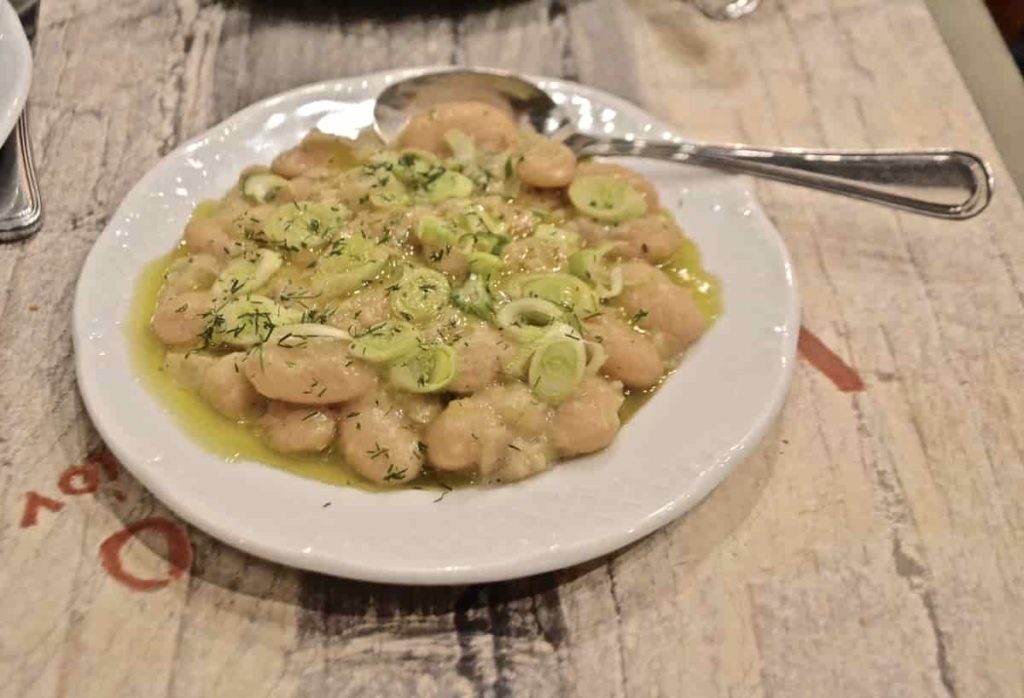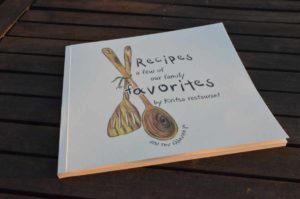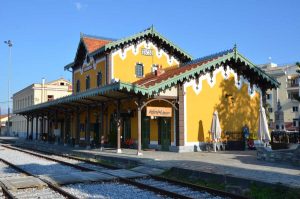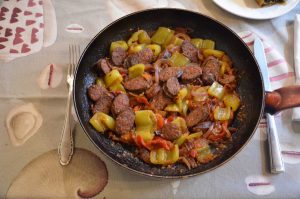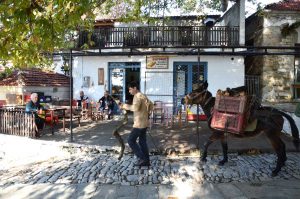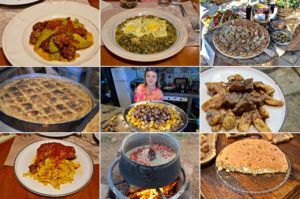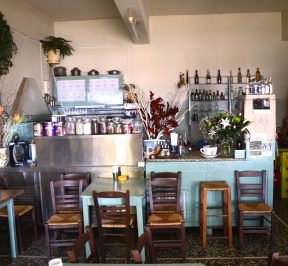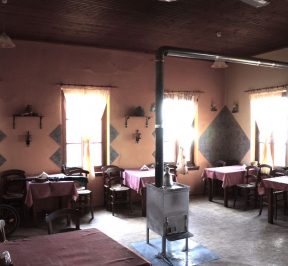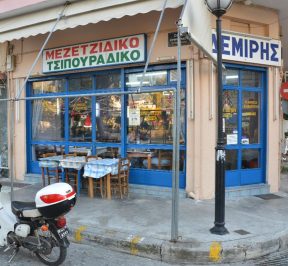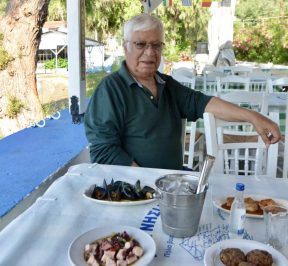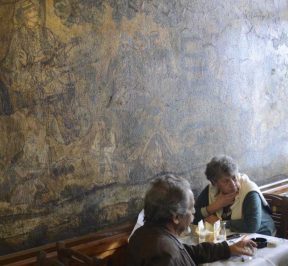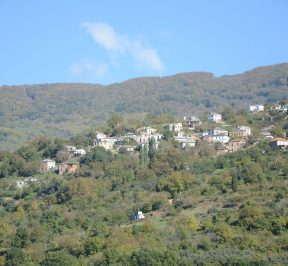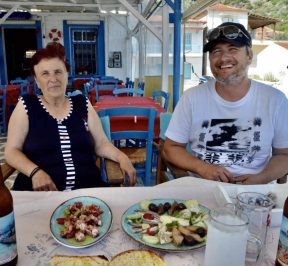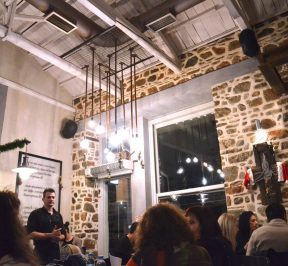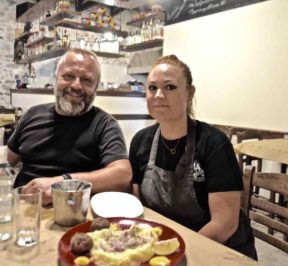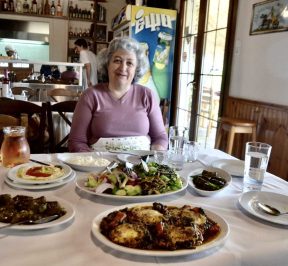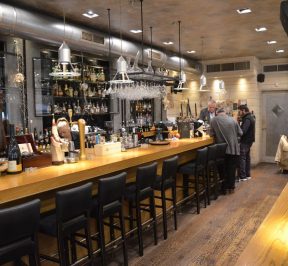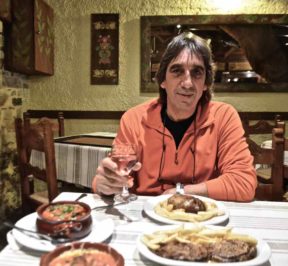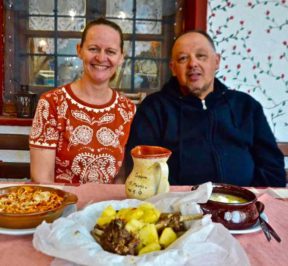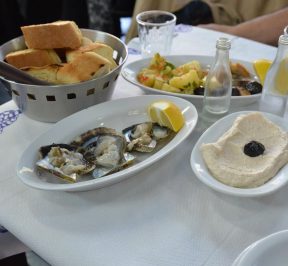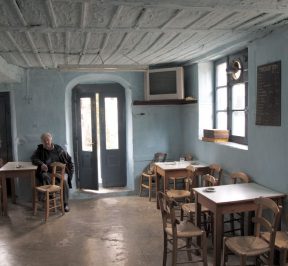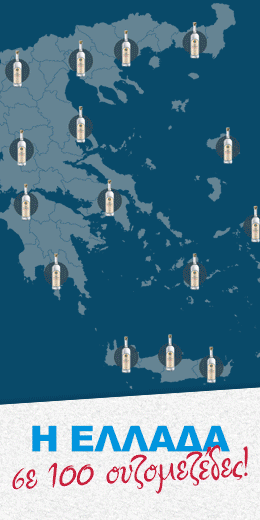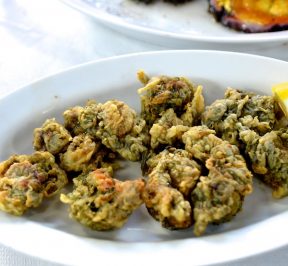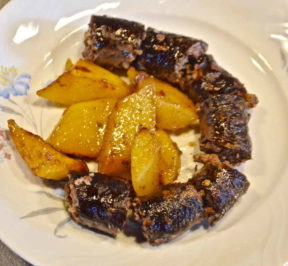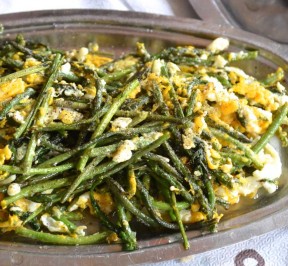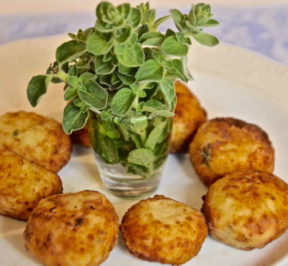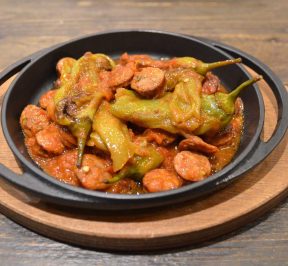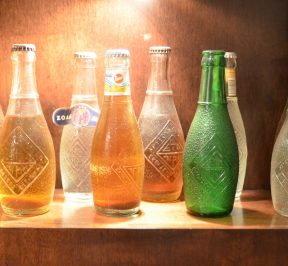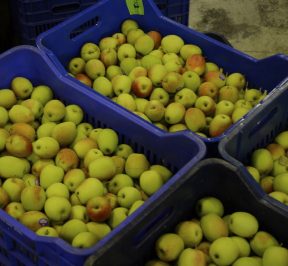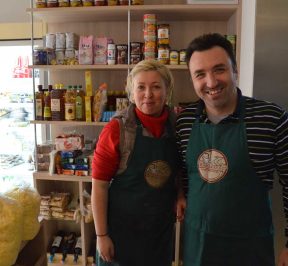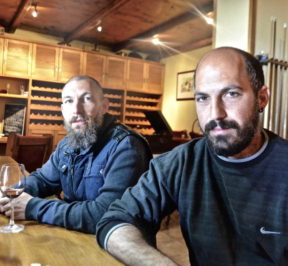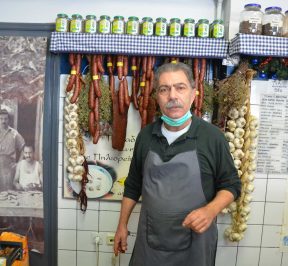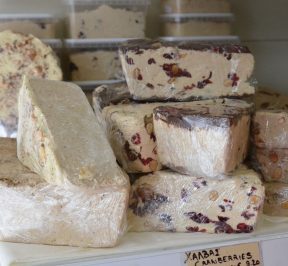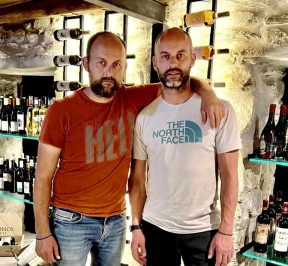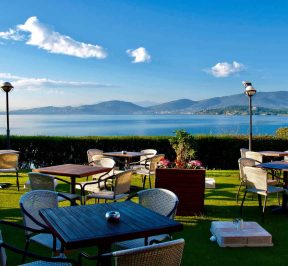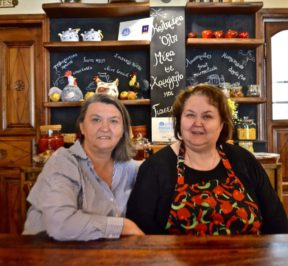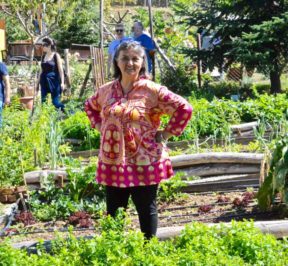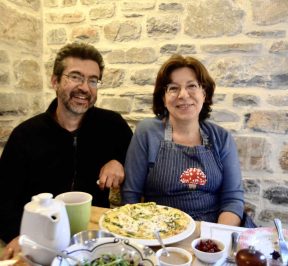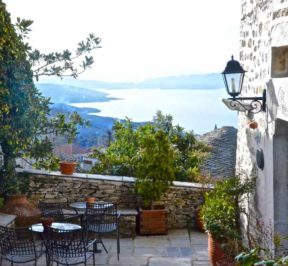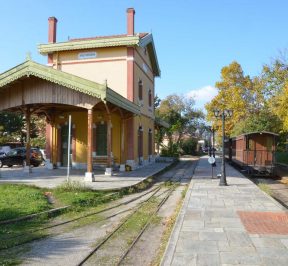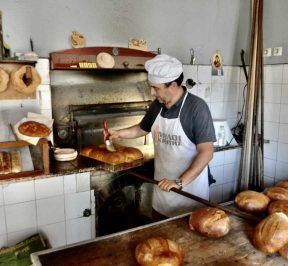Traditional Cuisine of Pelion
The traditional Pelion cuisine is based on its simple raw materials mountain of the Centaurs, in aromatic herbs, and sprouts, oregano, thyme, thyme, mountain tea, wild herbs, ferns, asparagus, sea buckthorn, mushrooms, blueberries, tree fruits that beautify the mild or wild slopes (Beeches, walnuts, chestnuts, oaks) and the fruits of trees grown at lower altitudes (olives, apples, pears, cherries, plums, citrus, etc.).
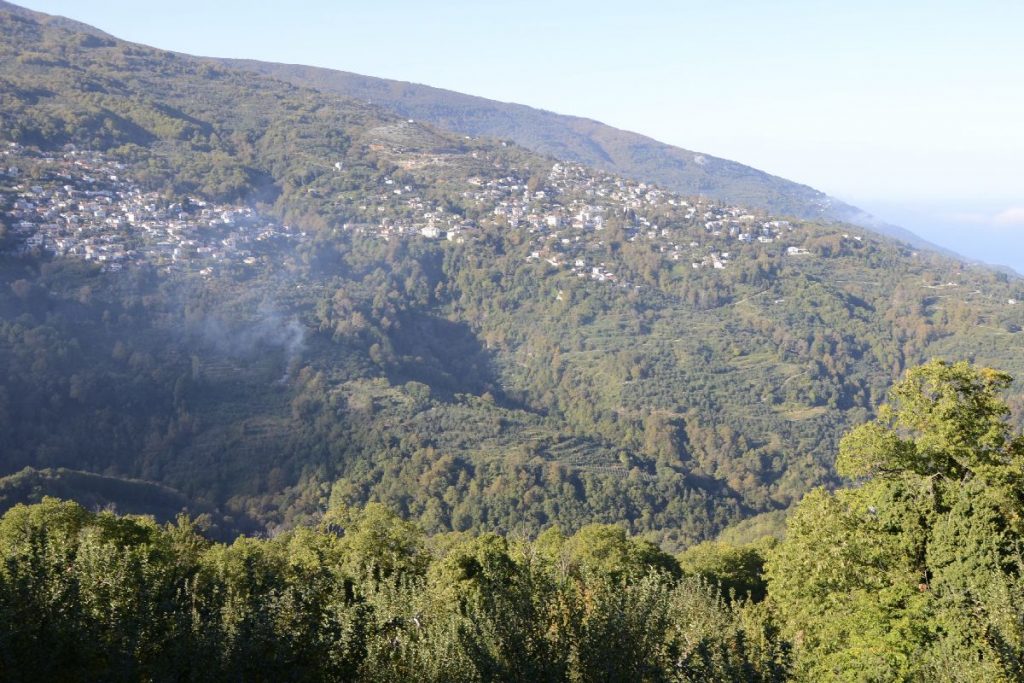
Pelion
The most famous agricultural product of Pelion is Zagora apples - the varieties Starkin Delicius, PDO product (1996) and freak, PDO product (2010) - which since 1985 acquire the distinctive name "Zagorin / Zagorin" with an internationally registered trademark and corporate identity logo. Today ο Zagora Agricultural Cooperative collects, maintains, packages and distributes 10.000 to 15.000 tons per year, is the most important economic unit of Pelion while its products have flooded Greece and foreign markets.
Other important products of Pelion are chestnuts of Pelion, famous for their good quality and large size with whitish flesh and very sweet taste, the olives of Pelion mainly in western and southern Pelion, where at altitudes from 0-300m. Countless olive trees are cultivated that give the table preservation of Pelion, a product of PDO. and extra virgin olive oil.
It is also very well known Pelion honey from flowers, chestnuts and flowers of the forest. The local wine made from red table grapes strawberry, has a purple color and fruity taste and you can find it in traditional taverns, while modern crops with wine grapes of Greek varieties are made in South Pelion (Argalasti). However, the great fame of Pelion and Volos comes from tsipouro which is made from grape marc while in some villages such as Lambinou, Pouri, Lafkos etc. It is also made from coumaras.
You will find it everywhere small boxes, even among the dense vegetation, on the mountain near the houses where the households cultivate the wonderful vegetables (eggplants, peppers, tomatoes, potatoes, spices, etc.) that are cooked, eaten as salads and prepared as pickles, while you will also find vineyards that cultivate its variety. strawberry, for fruit but also for the local red wine. Of course there is also local livestock mainly from herds with hundreds of sheep each, hunting game (wild boar, birds) while on the beaches you will meet fishermen fishing from the seas of the Aegean and the Pagasitic Gulf.
From the wealth of the Pelion flora, characteristic dishes or appetizers are created that constitute the identity of the Pelion cuisine.
From the flora, as characteristics of Pelion stand out the tsitsiravla, an exquisite meze for tsipouro that are the tops of wild peanuts harvested in spring. While wild peanuts are grown in other parts of Greece, only in Pelion are exploited and loved to such an extent. They are pickled with vinegar and a little garlic, salad, omelette with eggs.
The kritama are the small plants that come out of the crevices of the rocks in the sea. They become pickles and flavor salads.
The fern shoots harvested in spring (March). They make a salad with plenty of oil vinegar and salt, fried with flour and sprinkled with a little wine, omelette, and delicious meatballs ..
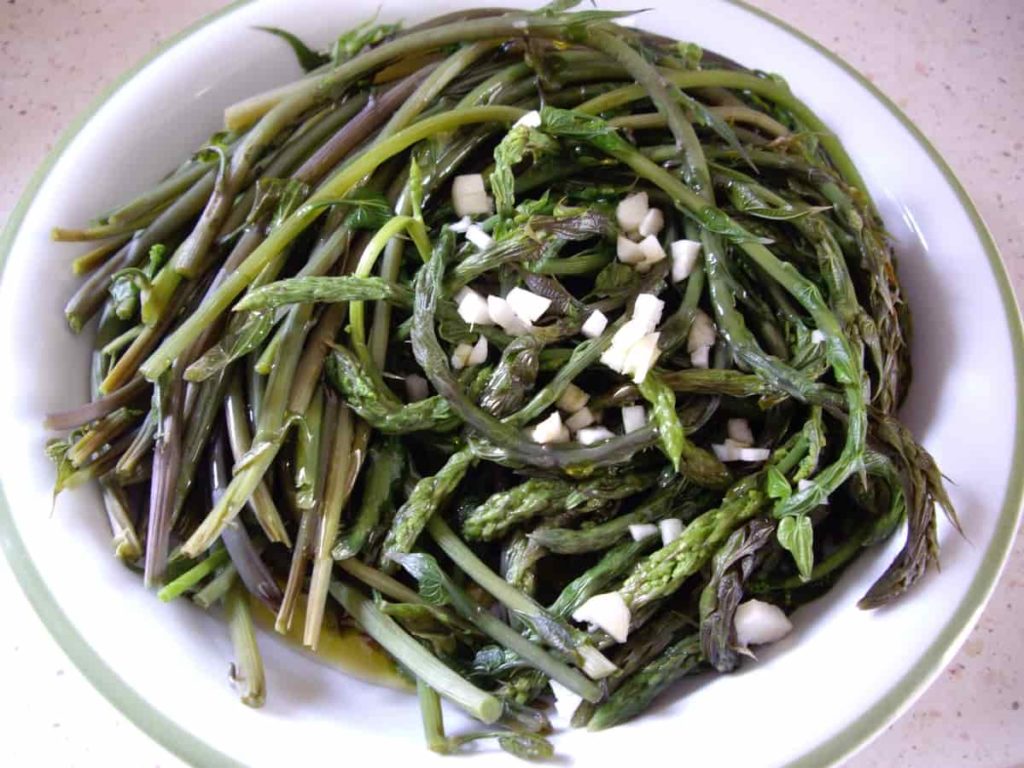
Boiled mountain asparagus, salad with garlic
The asparagus, tender shoots, emerge in spring and become boiled or omelette.
The rod, the favorite meze that sweetens its bitter taste with vinegar and olive oil. They are eaten as a hot salad.
Mushrooms, the favorites of the inhabitants of Pelion that are cooked in the pan, with baked potatoes, grilled, etc.
Pelion-Volos Cheese
From the milk collected daily from herds of free-range sheep and goats, located on the borders of the mountainous area of North and South Pelion, between the north of the prefecture of Magnesia and south of the prefecture of Larissa, adjacent to Lake Carla are produced in the feta area (PDO), kaseri (PDO), manouri (PDO), goat cheese, kefalotyri, anthotyro, dry mizithra, salted mizithra, fresh butter, sheep yogurt and galotyri.
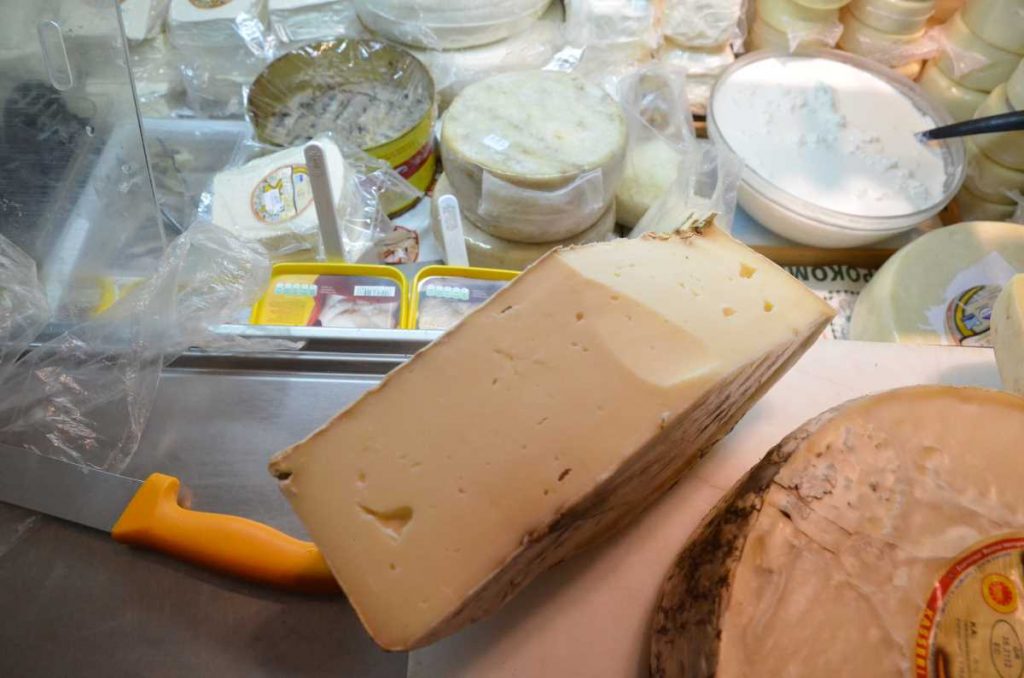
Karakanas Cheese Factory in Volos
The tsipouro restaurants of Volos

Bubbles of Pagasitikos, a tsipouro appetizer all over the sea
The tsipouradika of Volos are separate from those of the rest of Greece, both for the appetizers and for their presentation ritual. In the authentic tsipouro restaurants of Volos you never order. You just announce the number of twenty-five (individual dose of drink) completed with the word "with" or "without" (anise) is meant.
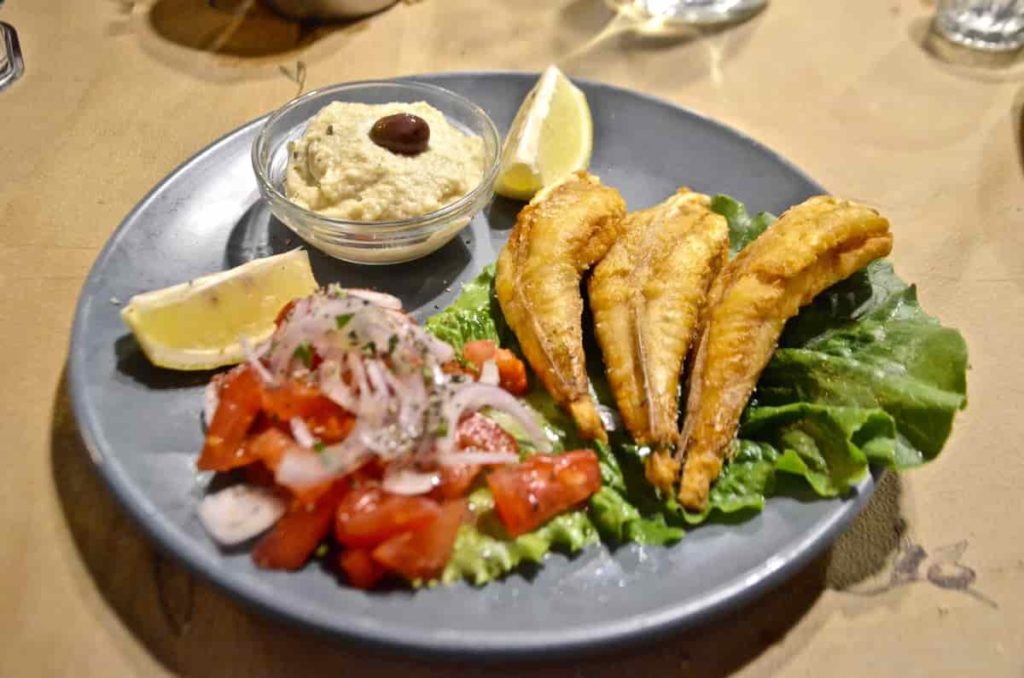
In Volos, in the fish market, but also in the tsipouro restaurants, the fanatics honor the tails of the peskandritsa (brasska), the brassouras that they love, because their taste is reminiscent of shrimp and crayfish
The arrival process of the appetizers depends on the number of tsipouro that you will consume. The appetizers of tsipouro (partly ouzo) must have a delicious intensity so as not to be neutralized by the bitterness of the drink. In the beginning come the pickles and the salted ones, the fried seafood continues, and as the consumption progresses, so do the most complex appetizers, which are usually the most expensive.

Fried anchovies dipped in vinegar. Another typical Voli meze.
The cooking and delicacies of Pelion
Historically important role in the formation of the Pelion cuisine was played by population transfers from the era of Ottoman rule, such as Vlachs, Arvanites, Epirotes, Thessalians, islanders, etc., who mixed with the locals and influenced their culture, traditions and eating habits, but also the lords and captains who lived for a long time in Egypt or traveled and carried the dietary standards of these countries.
Nowadays, the housewives of Pelion, depending on the season - because each season had its own food - cooked with passion and imagination in tsoukali or in bronze over a low fire in the oven or in the pan the goods provided by nature. In spring and summer they set the Pelion table with weeds, vegetables and seafood, while in autumn and winter they had the honorary trachanas, bean soup, lentils, chickpeas, soups, mushrooms and game. and meats.
The most important delicacies of the region of Pelion and Volos are the following:
Kolitsians

Kolitsians (anemones of the sea)
The kolitsians or else the sea anemones, fried in batter are served only in the traditional tsipouro restaurants of Volos. The flowers bring to our plate the aroma of the sea and together with the brassouras and bubbles they sign the identity of the Volio tsipouro meze.
Deep fried greens with egg eyes

Deep fried greens with egg eyes
In a frying pan, fry the onions in olive oil and then add the greens (kaukalithres, myroni, spinach, leeks, celery, etc.), the tomato, the salt, the pepper and simmer mainly in their juice. Finally, pour the eggs over the greens until cooked.
Spencer
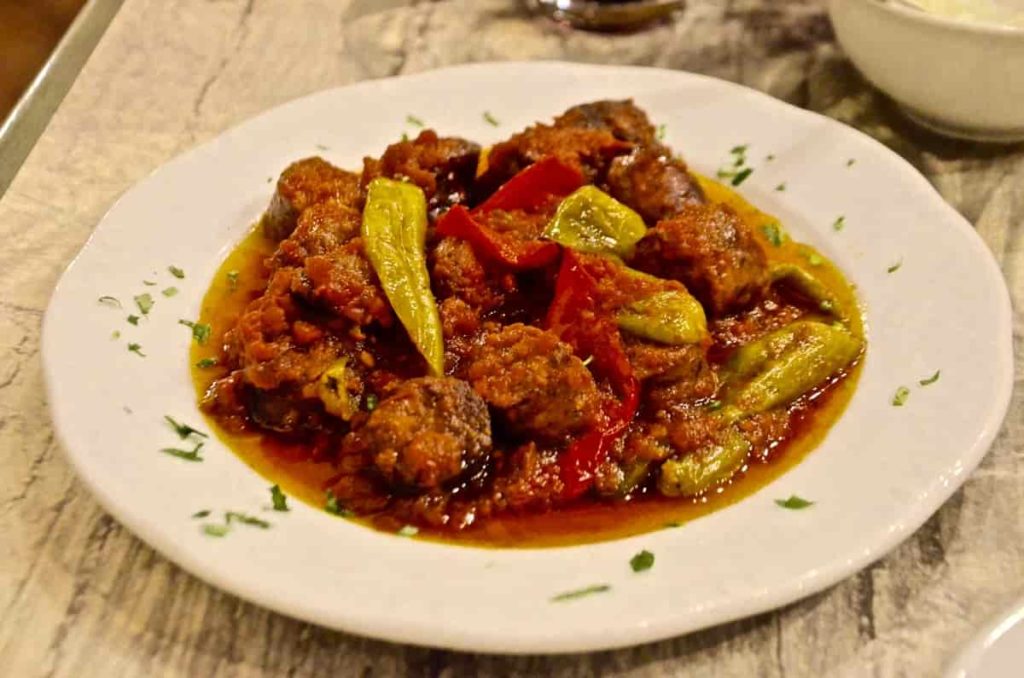
Spencer
The spentzofai is the most famous food of Pelion. It got its name from spentza, which in the Pelion idiom means hot pepper, while in other parts of Greece the word spetsiaia is used, derived from the Italian spezie (spices). Alexandros Papadiamantis, on the nearby island of Skiathos, in the short story "Pink beaches" mentions the peppers as sponges. Fry the green peppers, with garlic, chopped tomatoes, hot peppers, salt and pepper. Fry the sliced village sausage in a separate pan and add it to the pan with the peppers.
Pelion bumblebee
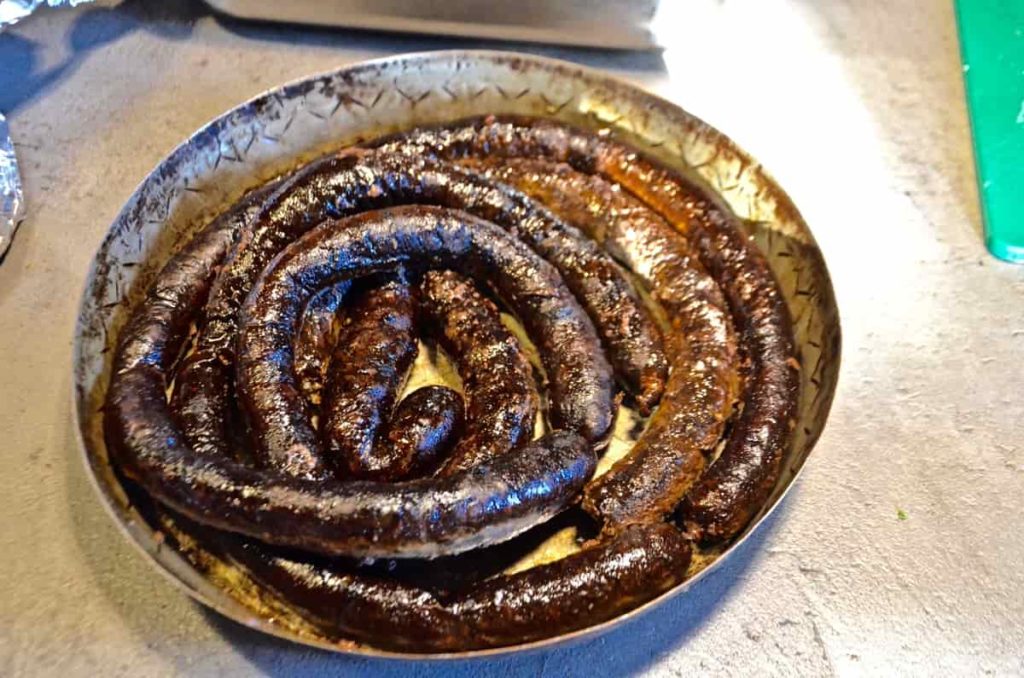
Pelion bumblebee
That's it Pelion bumblebee a special dish, is one of the most important ambassadors of the gastronomy of Pelion and fortunately we meet him in the local taverns that respect themselves. In a mutton intestine about 1-1,5 meters, we put the boiled chopped liver (without the liver, the Volioti butcher Strakas told us), the ground beef, rice, chopped onions, parsley, hot peppers, hot peppers, a oregano and juice of 2 lemons.
Trachanas with sausages
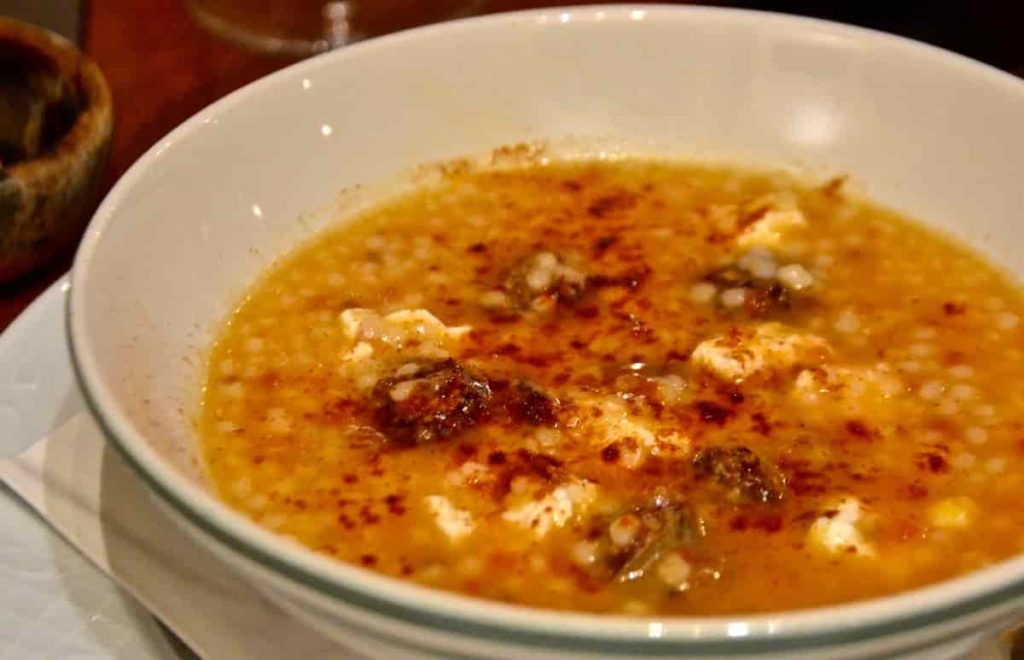
Trachanas with sausages
Trachanas with sausages is one of the most classic Pelion dishes. Saute the sausages and onions, remove the sausages and add the trachana to brown… then add the tomato and then add the water.
Veal with quinces and chestnuts
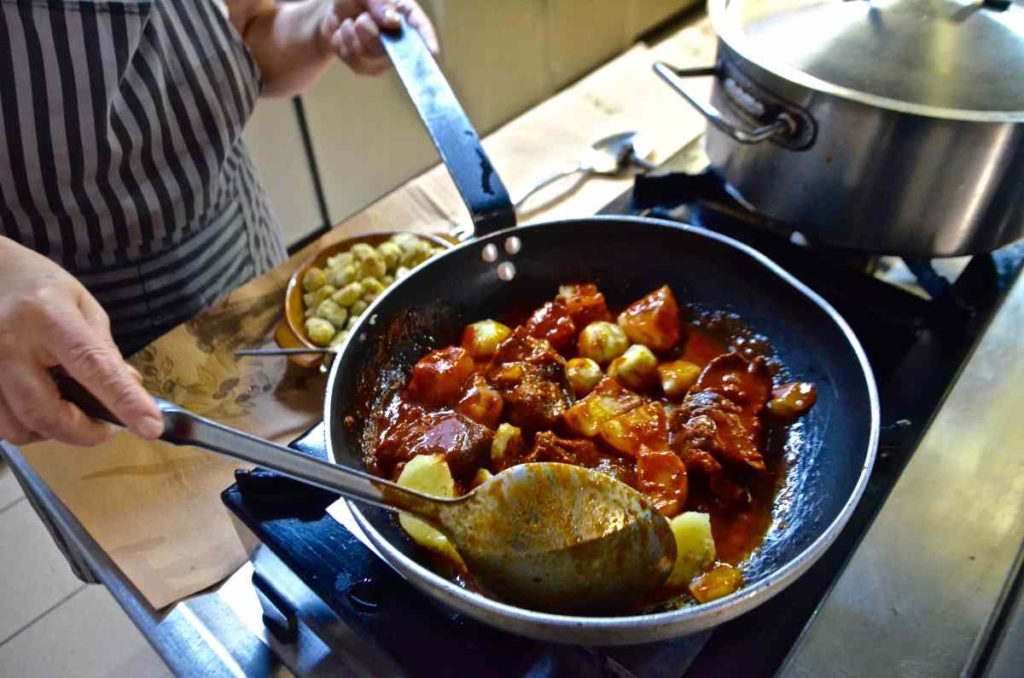
Veal with quinces and chestnuts
Veal with Pelion quinces and chestnuts, the goods of the land of Pelion. Fry the pieces of meat on their own and then with onion, quench them with mavrodafni wine and let them simmer for about an hour and a half. Separately caramelize onions, sugar, vinegar and then throw them together with the chestnuts, quinces, salt and spices in the pot with the meat and let them simmer.
Roasted rooster with noodles

Roasted rooster with noodles
The recipe includes chopping and browning the rooster, frying it with onion and boiling it with wine. Then add the tomato juice and pulp, sugar, cinnamon, bay leaves, allspice and salt and simmer together for about an hour and a half. Serve the rooster with the noodles and grated kefalotyri.
Pelion pies
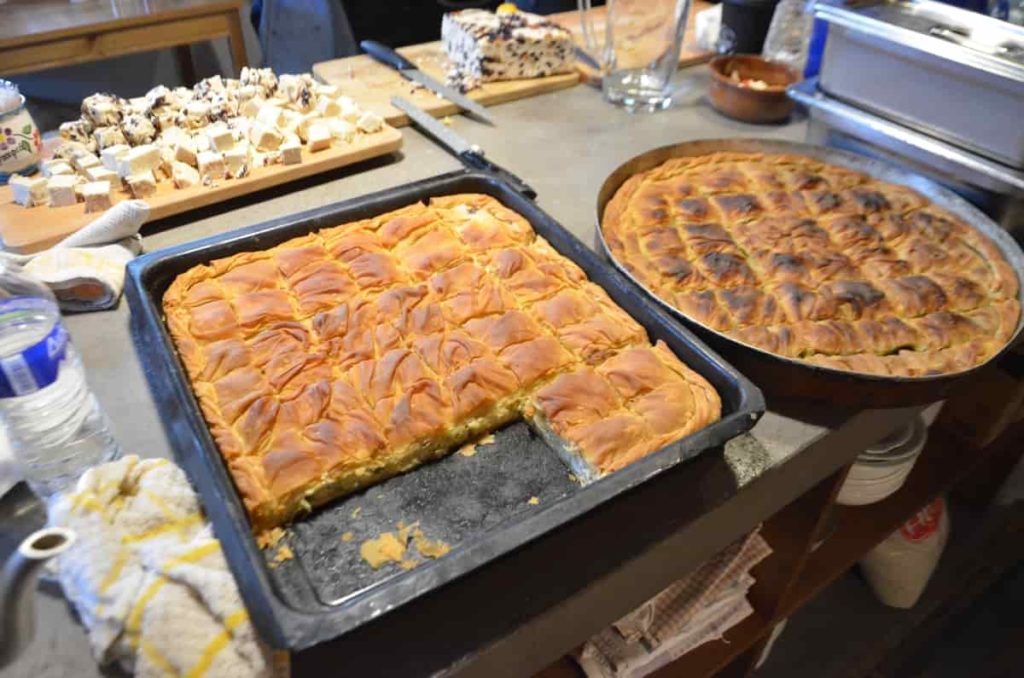
Pelion pies
With water, hard flour, salt, oil and vinegar - to obtain crispiness - the dough is reached and when it rests, the leaves are spread, three at the base and three more lids. In between, the filling is added, mountain greens -on season-, spinach, onions, garlic, trachanas to absorb the liquids, salt, pepper, eggs and feta. In addition to the green pie, other pies are made in much the same way, such as prasopita, cheese pie and pepper pie, all praising the wisdom of the housewife from Pelion who in the slightest could make a delicious lentil to feed the family.
Meatballs
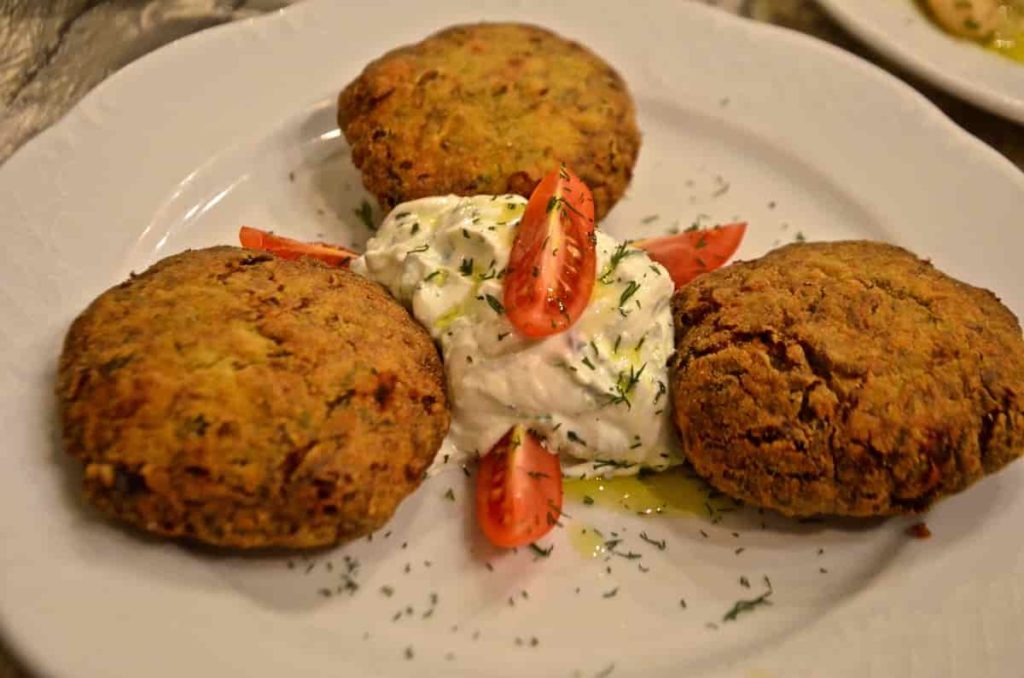
Oregano meatballs
The meatballs of Pelion are mainly “pseudo meatballs", That is, meatless meatballs, a tradition that is also followed in the Aegean islands (Santorini tomato meatballs, Sifnos chickpea meatballs, Schinoussa faba meatballs, Kalymnos octopus meatballs). In Pelion the typical "pseudo meatballs" are oregano meatballs, made from fresh oregano sprouts everywhere and are fried with a mixture of boiled potatoes, cheese and eggs. In the same way the feather meatballs instead of fresh oregano, wild fern tops are used.
Other dishes that are often found in Pelion -but also in other areas of Greece- are the hot ones bean soup, predominantly winter food served with hot peppers and local sausage, lamb lemon oil, lamb with potatoes simmered in the oven with wood, pork with leeks or sweet and sour with quinces, wild boar in many recipes, such as stew, prasotiania, braised goat.
Sweets
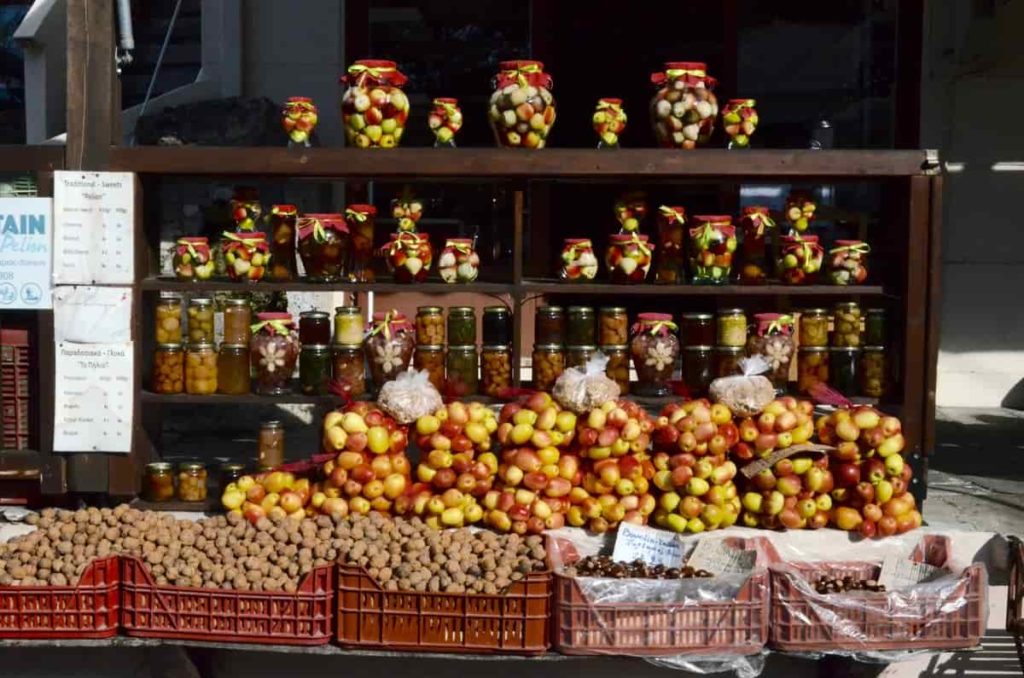
Sweets
Pelion produces large quantities of delicious fruits grown at the lowest altitudes of the mountain, pears, cherries, peaches and much more. From these, housewives, small households and women's cooperatives produce delicious food spoon sweets, jams and liqueurs. Quince, chestnut, walnut, berries, firiki, cherry, sour cherry, wild cherry, chestnut, sykalaki, bilberry, blueberries, wild strawberries, everything becomes delicious sweets.
For those who want more information about the gastronomy of Pelion, I refer you to two excellent books released in 2019.
The Recipes favorites by Kritsa Restaurant of Eleni Karaiskou from Kritsa Gastronomy Hotel of Portaria and the The gastronomic concerns of a hotelier of Filaretos Psimenos of Amanita hostel from Tsagarada.
Two worthy representatives of the hospitality of Pelion honor and exalt the importance of Pelion gastronomy in shaping the cultural and tourist identity of the region.
- The gastronomic concerns of a hotelier
- Favorite recipes
PLACE & HISTORY - TRADITIONAL KITCHEN
TAVERNS - RESTAURANTS - CAFES


